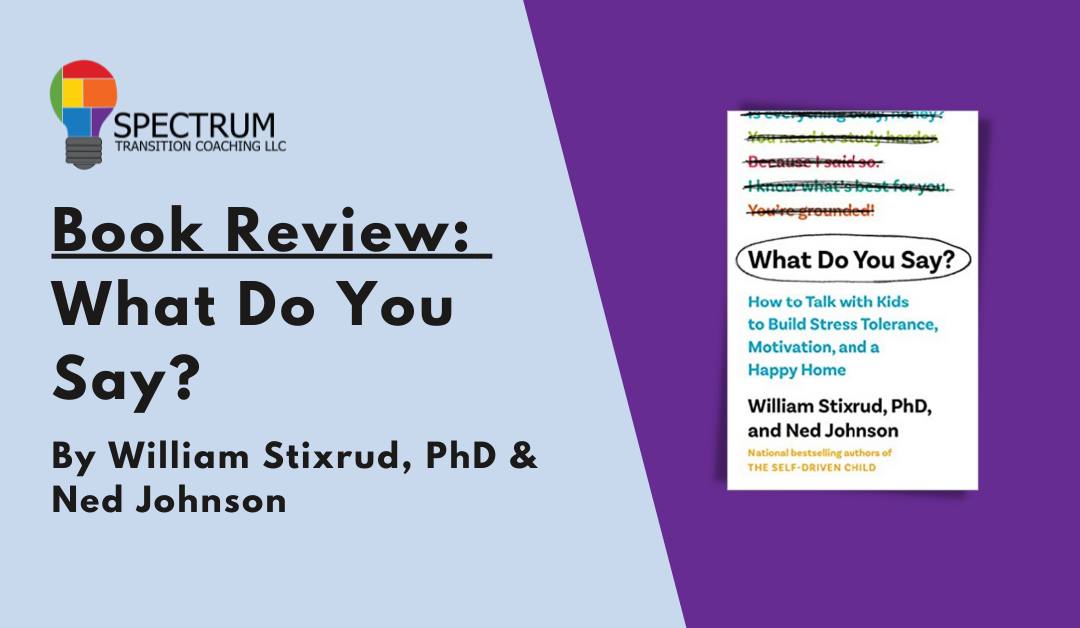“How can I get my young adult to agree to coaching?”
If I had a dollar for every parent who asks me this question, I would be a very wealthy woman! Coaching can be a wonderful and fulfilling endeavor, but it only works when the client comes to it of their own free will. One of the reasons I require an intake appointment with a potential client before we begin is to hear directly from the young adult that they are ready and willing to work together.
It can be very frustrating to try to convince your child to do something that you KNOW will benefit them. Even worse, your attempts can drive a wedge between you and your child. William Stixrud and Ned Johnson address this dilemma and other important nuances of parent/child communication in their latest book What Do You Say? How to Talk with Kids to Build Motivation, Stress Tolerance, and a Happy Home.
The underlying premise of What do You Say? is that empathy and validation are the keys to communication. The authors explain that when parents ask: “how do I motivate my kid?” they are really asking “how do I get my kid to change” Most people are resistant to change. And parents need to realize that it is IMPOSSIBLE to force people to change. This book can help parents learn tools to help their kids feel better about change. These tools include:
- Reflective/empathetic listening: This listening technique focuses on validating what your child says through phrases like “I understand” or “So you feel like….” Instead of listening to solve, you are simply listening to understand.
- “Parent as consultant” communication: The main component of this communication style offering to share your wisdom instead of lecturing your kids about what they should do. Begin by asking your child permission to offer a suggestion or observation and then impart your wisdom only when they are open to listening to it.
- Parents as a non-anxious presence: This mindset involves projecting calm support instead of anxiety and fear. By lowering their own emotionality and modeling courage in the face challenges, parents help their children feel comfortable taking risks.
- Motivational interviewing: This conversational style can be particularly useful when children show ambivalence to change. The authors liken it to a game of 20 questions – you ask open-ended reflective questions, express curiosity, and ask follow-up questions all designed to guide your child toward self-discovery.
Stixrud and Johnson explain that parent anxiety combined with our reflexive desire to “fix” is at the heart of many of the communication conflicts we have with our children. They explain that parental anxiety for our kids is based on fears of the future – how school and life decisions made now will impact future successes. When we get anxious, we tend to jump into “fixer mode” and attempt to solve the problem. By denying our children the opportunity to solve their own problems, we hinder their ability to develop a tolerance for stress. The ability to tolerate stress is built from the knowledge that we can successfully problem solve.
What Do You Say? includes sample dialogues and tips for talking about anxiety, sleep habits, happiness, appropriate use of technology, and other important topics. Reading this book won’t help you convince your children to do anything they don’t want to do. But What Do You Say? will provide you with the tools to help guide children through conversations where they feel comfortable exploring and articulating their own motivations for change.

